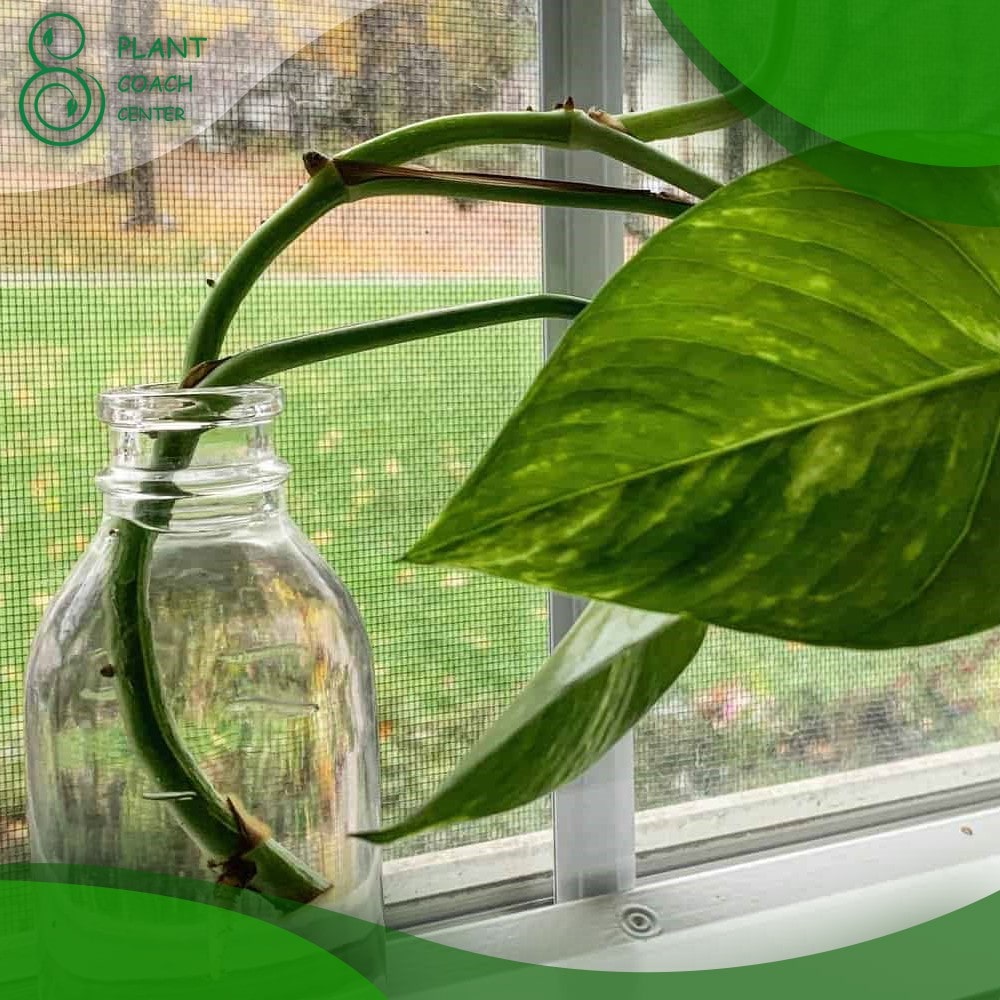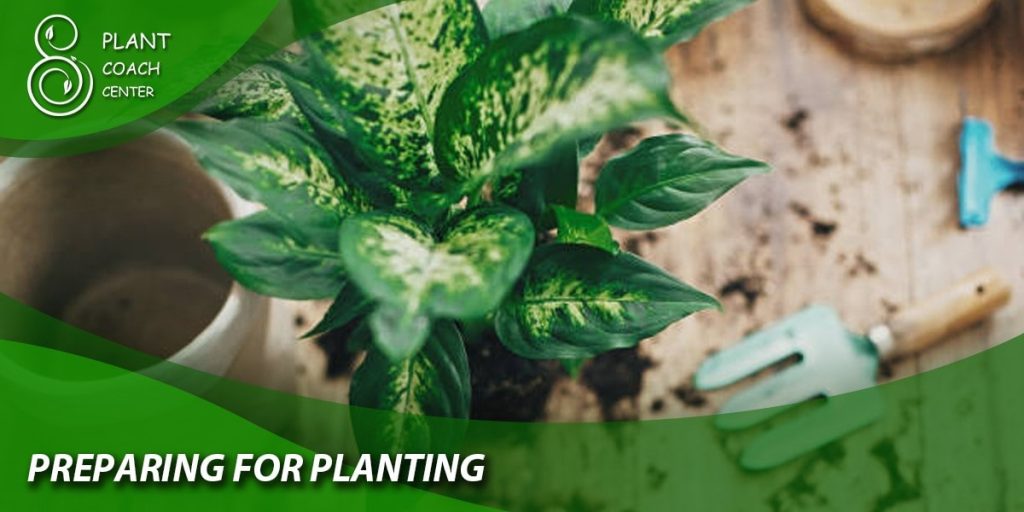When to Plant Propagated Pothos
Welcome to the ultimate guide on when to plant propagated pothos. In this comprehensive article, we will explore the various aspects of pothos propagation and provide valuable insights on determining the optimal time for planting your propagated cuttings.
Whether you’re a seasoned plant enthusiast or a beginner, this guide will equip you with the knowledge to successfully grow your pothos plants. This content is brought to you by Plant Coach Center (plantcoachcenter.com), your go-to resource for plant care expertise.
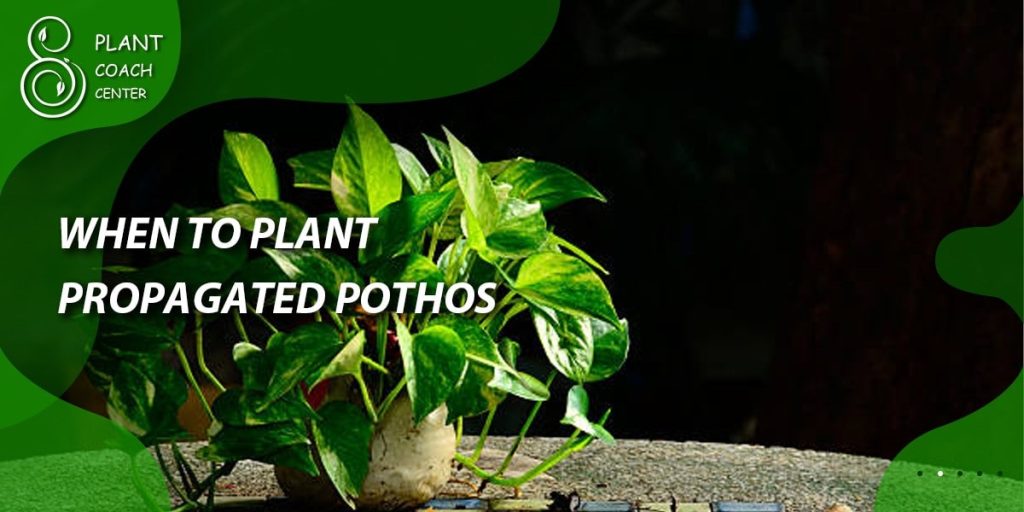
Understanding Pothos Propagation
- Methods of Pothos Propagation
Pothos plants can be propagated through three primary methods: stem cuttings, water propagation, and soil propagation. Each method has its advantages and considerations.
Stem Cutting:
– Explanation: Stem cuttings involve taking a section of the plant’s stem and encouraging root development.
– Benefits: Allows for efficient propagation and faster growth compared to other methods.
– Considerations: Requires attention to cutting technique and environmental conditions.
Water Propagation:
– Explanation: Water propagation involves placing cuttings in water until roots develop.
– Benefits: Offers visibility into root development and an aesthetically pleasing process.
– Considerations: Requires regular monitoring of water quality and changing.
Soil Propagation:
– Explanation: Soil propagation involves planting cuttings directly into a suitable growing medium.
– Benefits: Mimics natural growth conditions and promotes quicker establishment of roots.
– Considerations: Requires proper soil preparation and moisture management.
- Factors Affecting Pothos Propagation Success
Successful pothos propagation depends on various factors that influence the health and vigor of the propagated cuttings.
Seasonal Considerations:
– Explanation: Different seasons can impact the success rate of pothos propagation.
– Timing: Understanding the optimal time for propagation based on the season is crucial.
– Effects of Seasons: Environmental conditions, such as temperature and humidity, play a significant role.
Environmental Factors:
– Explanation: Factors like light, temperature, and humidity affect the success of propagation.
– Light Requirements: Pothos prefers bright, indirect light during the propagation phase.
– Temperature and Humidity: Maintaining optimal levels promotes root development.
Plant Health and Vigor:
– Explanation: The health and vitality of the parent plant influence propagation success.
– Selecting Healthy Plants: Choose parent plants that are disease-free and exhibit vigorous growth.
– Nutrient Availability: Ensure the parent plant receives adequate nutrition for robust cuttings.
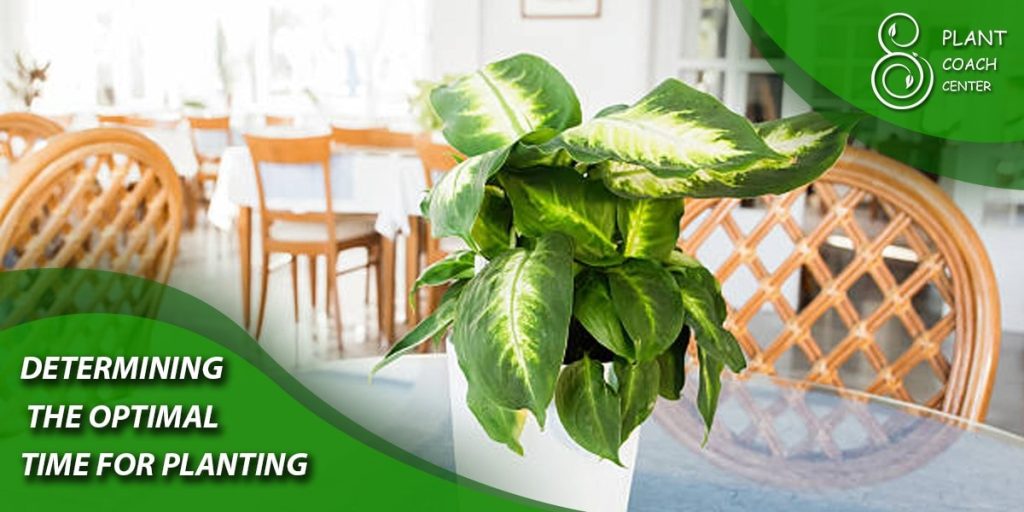
Determining the Optimal Time for Planting Propagated Pothos
- Timing Considerations for Different Propagation Methods
Each propagation method requires specific timing considerations for successful planting.
Stem Cutting Propagation Timing:
– Explanation: Understanding the right time to plant stem cuttings is crucial for their successful establishment.
– Preparation Stage: Allow cuttings to develop robust root systems before planting them.
– Signs of Readiness: Look for well-developed roots and healthy foliage as indicators.
Water Propagation Timing:
– Explanation: Proper timing is essential to transition water-rooted cuttings into soil or a growing medium.
– Root Development: Wait for an adequate root system to form before transplanting into soil.
– Transitioning Process: Gradually introduce the cuttings to soil to avoid shock.
Soil Propagation Timing:
– Explanation: Understanding when to plant soil-propagated cuttings ensures their successful establishment.
– Root Growth Stage: Wait until the roots are well-developed and show signs of readiness.
– Monitoring Growth: Regularly assess the root system’s health and stability before planting.
- Factors Influencing Planting Time
Several factors influence the optimal time for planting propagated pothos cuttings.
Climate and Weather Conditions:
– Explanation: Climate and weather play a significant role in determining the best time for planting.
– Temperature Range: Pothos prefers warm temperatures, so consider the climate of your region.
– Seasonal Changes: Account for variations in temperature, humidity, and light availability.
Growth Stage of Propagated Cuttings:
– Explanation: The growth stage of the propagated cuttings affects their readiness for planting.
– Root Development: Ensure the cuttings have developed a healthy root system before planting.
– Foliage Assessment: Examine the foliage for signs of maturity and vigor.
Root Development and Readiness:
– Explanation: Assessing the root system’s development and readiness is crucial for successful planting.
– Root Length and Density: Look for well-developed roots with a good length and density.
– Root Color and Texture: Healthy roots should be white or light-colored, firm, and free from rot or damage.
– Root System Stability: Ensure the roots are well-established and capable of supporting the plant.
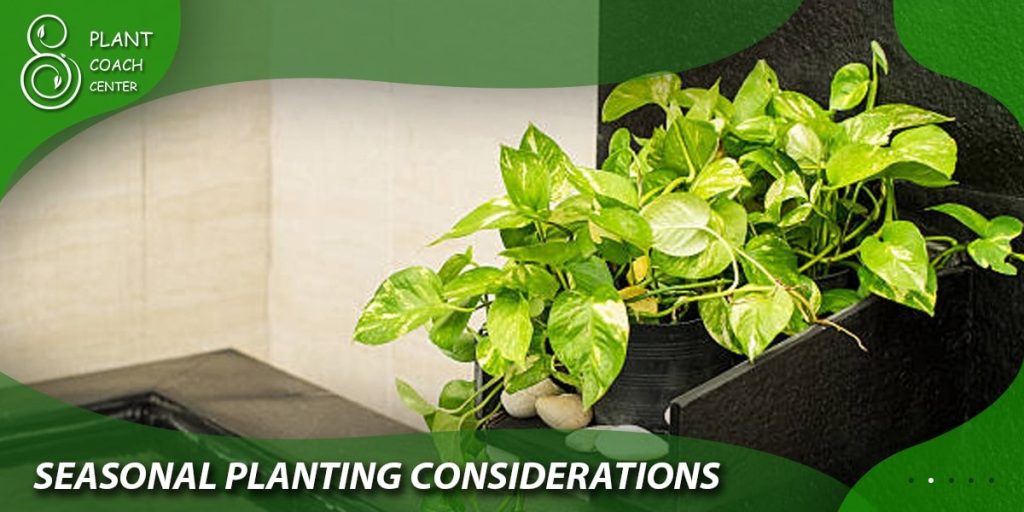
Seasonal Planting Considerations
Pothos can be planted in different seasons, each with its unique benefits and considerations. Understanding the seasonal variations will help you make informed decisions for successful planting.
- Spring Planting
Spring offers favorable conditions for pothos planting, promoting robust growth and establishment.
Benefits and Challenges:
– Benefits: Increased daylight, moderate temperatures, and active growth make spring ideal for planting.
– Challenges: Sudden temperature fluctuations and potential pest activity should be monitored.
Recommended Practices:
– Preparing the Soil: Ensure the soil is well-drained, fertile, and free from weeds.
– Gradual Transition: If the cuttings were propagated indoors, gradually acclimate them to outdoor conditions before planting.
- Summer Planting
Summer planting requires careful attention to temperature and moisture management to prevent stress or damage to the plants.
Effects of Heat and Humidity:
– Temperature Considerations: High temperatures can lead to wilting and stress if not properly managed.
– Humidity Control: Monitor humidity levels and provide adequate moisture to prevent drying out.
Precautions and Strategies:
– Watering Practices: Water deeply and regularly, ensuring the soil doesn’t dry out completely.
– Shade Protection: Provide shade or partial shade during the hottest parts of the day to prevent sunburn.
- Fall Planting
Fall presents favorable conditions for planting, allowing the plants to establish strong root systems before winter.
Advantages and Considerations:
– Advantages: Cooler temperatures, reduced pest activity, and moist soil create optimal conditions for root development.
– Considerations: Allow sufficient time for the plants to establish before the onset of frost or colder weather.
Tips for Successful Planting:
– Timing: Plant early enough in fall to allow for root development before the first frost.
– Mulching: Apply a layer of organic mulch to insulate the roots and regulate soil temperature.
- Winter Planting
Winter planting poses challenges due to the cold and frost, but it can be successful with the right precautions.
Pros and Cons:
– Pros: Reduced competition, dormant pests, and potential discounts on plant purchases.
– Cons: Risk of frost damage, limited growth, and slower establishment compared to other seasons.
Winter Protection and Care:
– Frost Protection: Cover the plants with frost blankets or move them to protected areas during freezing periods.
– Managing Moisture: Avoid overwatering, as excessive moisture combined with cold temperatures can lead to root rot.
Preparing for Planting
Before planting your propagated pothos cuttings, it’s essential to ensure you have the right container or garden bed, prepare the soil, and understand the transplanting process.
- Choosing the Right Container or Garden Bed
Container Selection:
– Size and Drainage: Choose a container with sufficient size and drainage holes to accommodate root growth and prevent waterlogging.
– Material: Select containers made of porous materials like terracotta or fabric pots to promote aeration.
Garden Bed Preparation:
– Soil Testing: Conduct a soil test to assess its pH, fertility, and organic matter content.
– Amendments: Add organic matter, such as compost or well-rotted manure, to improve soil structure and nutrient availability.
- Soil Preparation and Amendments
Soil pH and Composition:
– Optimal pH Range: Pothos thrives in slightly acidic to neutral soil (pH 6.0-7.0).
– Soil Texture: Ensure well-draining soil that retains moisture without becoming waterlogged.
Organic Amendments:
– Compost: Incorporate compost into the soil to improve its fertility, structure, and moisture-retaining capacity.
– Manure: Well-rotted manure adds essential nutrients and organic matter to the soil.
- Transplanting Propagated Pothos Cuttings
Proper Handling of Cuttings:
– Gentle Approach: Handle the cuttings carefully to avoid damaging the delicate roots and foliage.
– Trimming Roots and Foliage: Trim any damaged or excessively long roots and remove any yellow or wilted foliage.
– Watering: Water the cuttings lightly before transplanting to keep the roots moist.
Transplanting Process:
– Digging Holes: Dig holes in the container or garden bed large enough to accommodate the root system of each cutting.
– Placement: Gently place the cuttings in the holes, ensuring the roots are spread out and covered with soil.
– Firming the Soil: Firmly press the soil around the cuttings to eliminate air pockets and provide stability.
Post-Transplant Care:
– Watering: Water the newly transplanted cuttings thoroughly but avoid overwatering.
– Monitoring: Keep a close eye on the plants for the first few weeks to ensure they adapt well and show signs of growth.
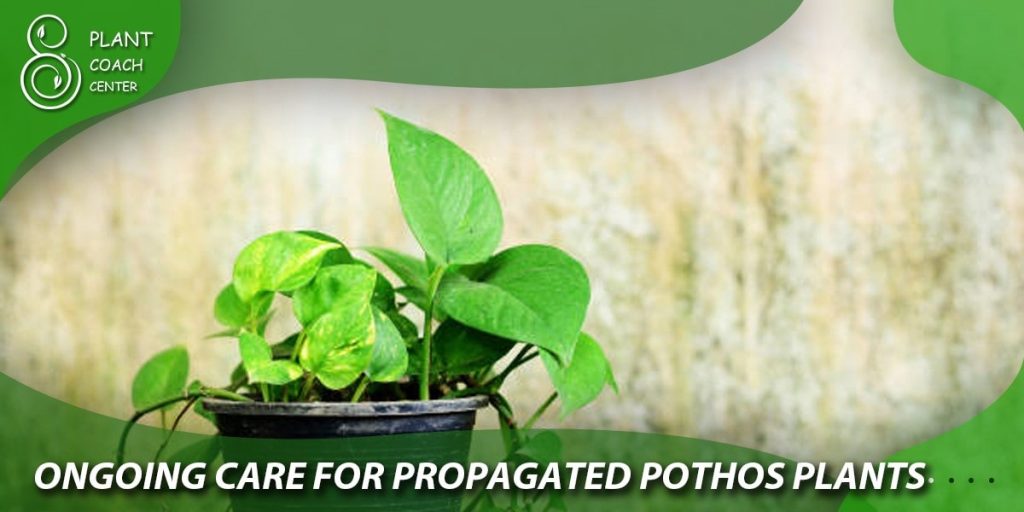
Ongoing Care for Propagated Pothos Plants
To ensure the long-term health and vitality of your propagated pothos plants, consistent care and attention are essential.
- Watering and Moisture Management
Watering Guidelines:
– Consistent Moisture: Keep the soil consistently moist but not waterlogged.
– Frequency: Water when the top inch of soil feels dry to the touch.
– Drainage: Ensure containers have proper drainage holes to prevent water accumulation.
Humidity Considerations:
– Humidity Requirements: Pothos appreciates moderate to high humidity levels.
– Humidity Boosting Techniques: Use a humidifier, place the plants on a tray of water, or group them together to increase humidity.
- Light and Temperature Requirements
Light Preferences:
– Indirect Light: Pothos thrives in bright, indirect light. Avoid direct sunlight, which can scorch the leaves.
– Low-Light Tolerance: Pothos can tolerate lower light conditions but may exhibit slower growth.
Temperature Considerations:
– Optimal Temperature Range: Pothos prefers temperatures between 65-85°F (18-29°C).
– Avoid Extreme Temperatures: Protect the plants from drafts, extreme heat, or cold air.
- Nutrient Requirements
Fertilization:
– Balanced Fertilizer: Use a balanced, water-soluble fertilizer with a ratio like 10-10-10 or 20-20-20.
– Frequency: Fertilize every 4-6 weeks during the growing season (spring and summer) and reduce or stop during fall and winter.
Nutrient Deficiency Symptoms:
– Yellowing Leaves: Nitrogen deficiency
– Stunted Growth: Phosphorus deficiency
– Leaf Browning or Tip Burn: Potassium deficiency
- Pruning and Maintenance
Pruning Techniques:
– Regular Pruning: Trim back leggy or overgrown vines to maintain a compact and bushy shape.
– Propagation: Use pruning as an opportunity to propagate new plants from the cuttings.
Pest and Disease Management:
– Common Pests: Watch out for mealybugs, spider mites, and aphids. Treat infestations promptly using organic or chemical methods.
– Disease Prevention: Ensure proper air circulation, avoid overwatering, and promptly remove any diseased foliage.
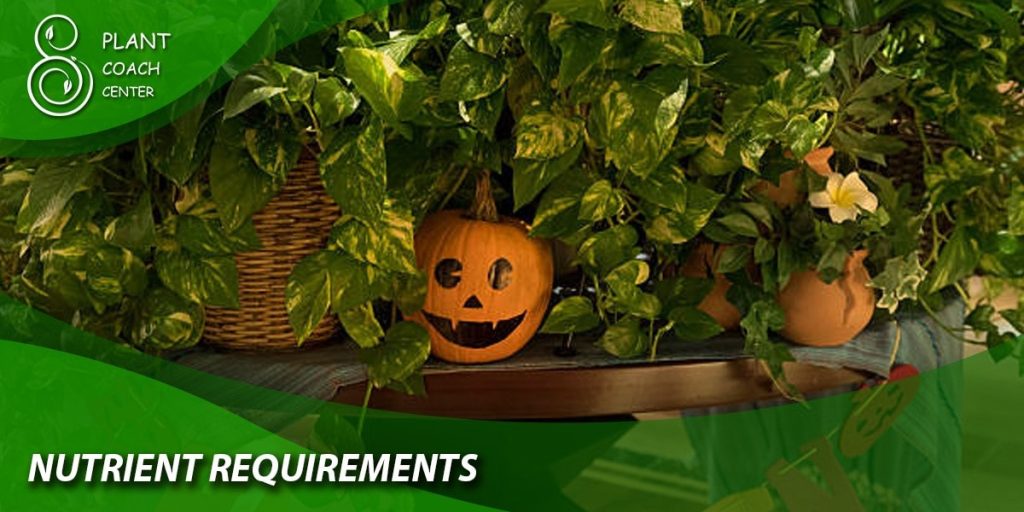
Conclusion
successfully planting propagated pothos cuttings requires an understanding of the different propagation methods, timing considerations, and seasonal factors. By considering the health of the parent plant, assessing root development, and adhering to optimal planting practices, you can ensure the establishment of healthy and thriving pothos plants.
Remember to provide ongoing care in terms of watering, light, temperature, nutrients, and maintenance to support their growth. For more valuable plant care information, visit Plant Coach Center (plantcoachcenter.com), your trusted resource for all things related to plant care.
Remember, nurturing and watching your pothos plants grow can be a rewarding and enjoyable experience. Happy planting!


